SIR ALFRED MUNNINGS (british 1878–1959) "TWO OF THEM" Signed and dated 'A.J. Munnings/1913' bottom left, oil on canvas 25 x 30 in. (63.5 x 76.2cm) provenance: Sotheby's, London, sale of June 7, 1961. Private Collection, Pennsylvania. EXHIBITED: "Alfred Munnings from Regional Collections," Brandywine River Museum, Chadds Ford, Pennsylvania, June 6-September 1, 2008. NOTE: Sir Alfred Munnings was acclaimed the greatest equestrian artist of the twentieth century, being recognized specifically for his hunting and sporting scenes.Yet, his depictions of gypsies remained a consistent presence throughout his long career, and still today, the artist's paintings of gypsies and Romany fire camps are considered among the finest and most fascinating of his early years. The present painting belongs to a series of works depicting gypsy hop-pickers, which Munnings executed near Alton, Hampshire just before the beginning of World War I. Although he had already started to paint gypsy wagons and Romany horse trainers in his country fair paintings as early as 1902, Munnings made his first visit to the Hampshire hop-fields in late August 1913, and stayed there for a period of over six weeks. Munnings explains in his autobiography that the hop-pickers were Romany families who "mostly travelled up from Bristol and West Dorsetshire, Salisbury Plain and Herefordshire" each fall, to eventually congregate in Hampshire, where they would harvest the large hop fields. Their colorful wagons and caravans, along with their flamboyant clothing and elaborate costumes appealed to Munnings, who painted them repeatedly. Children with dark black eyes became his favorite models, and he befriended some of them, even caring for their dogs, goats and ponies (he bought a treasured dog from the gypsies). As Munnings recalls in his memoirs: ''Of all my painting experiences, none were so alluring and colorful as those visits spent amongst the gypsy hop-pickers in Hampshire each September (…) More glamour and excitement were packed into those six weeks than a painter could well contend with (…) I think of crowded days of work - too swiftly gone." He later continues: "Never in my life have I been so filled with a desire to work as I was then. The families that I got to know had picturesque children, dogs and horses. [...] Nobody could beat their style of dress (..) What days! What models!" (quoted in A.J. Munnings, An Artist's Life, 1950, pp. 288-89). Celebrated as a great colorist, Munnings preferred painting outdoors in natural light even on the coldest days, only later working up his studies in the studio. The gypsy scenes, of which Munnings is so fond, were not only a fresh subject for the artist, but particularly well suited to his ability to depict sunlight and color. Painting with a quick technique, Munnings applied his paint in sure, thick strokes, achieving a densely textured surface, thus enlivening the scene despite the monochromatic palette of the English countryside. The present work features two gypsy boys, presumably the children of Mrs. Loveday, near what appears to be a forest entrance. Just like in his earlier works, Munnings does not portray the gypsies laboring. Instead, they are shown away from the camp, proudly posing with their horses, which were vital to their way of life since they were used for transport and trading. With their elaborate poses, the figures are reminiscent of classical models and convey a sense of nobility. By choosing to depict the children in this manner, Munnings not only shows a certain empathy towards the figures, but also reconnects with the principles of 18th century portraiture, proving the two gypsy boys are worthy of fine representation. Munnings does not caricature the boys; instead he keeps their authenticity and celebrates their particular way of life. Through the comical expression of the smaller boy, and the grim on the face of the taller boy, Munnings demonstrates the legendary gypsy camaraderie and bond, which he res
SIR ALFRED MUNNINGS (british 1878–1959) "TWO OF THEM" Signed and dated 'A.J. Munnings/1913' bottom left, oil on canvas 25 x 30 in. (63.5 x 76.2cm) provenance: Sotheby's, London, sale of June 7, 1961. Private Collection, Pennsylvania. EXHIBITED: "Alfred Munnings from Regional Collections," Brandywine River Museum, Chadds Ford, Pennsylvania, June 6-September 1, 2008. NOTE: Sir Alfred Munnings was acclaimed the greatest equestrian artist of the twentieth century, being recognized specifically for his hunting and sporting scenes.Yet, his depictions of gypsies remained a consistent presence throughout his long career, and still today, the artist's paintings of gypsies and Romany fire camps are considered among the finest and most fascinating of his early years. The present painting belongs to a series of works depicting gypsy hop-pickers, which Munnings executed near Alton, Hampshire just before the beginning of World War I. Although he had already started to paint gypsy wagons and Romany horse trainers in his country fair paintings as early as 1902, Munnings made his first visit to the Hampshire hop-fields in late August 1913, and stayed there for a period of over six weeks. Munnings explains in his autobiography that the hop-pickers were Romany families who "mostly travelled up from Bristol and West Dorsetshire, Salisbury Plain and Herefordshire" each fall, to eventually congregate in Hampshire, where they would harvest the large hop fields. Their colorful wagons and caravans, along with their flamboyant clothing and elaborate costumes appealed to Munnings, who painted them repeatedly. Children with dark black eyes became his favorite models, and he befriended some of them, even caring for their dogs, goats and ponies (he bought a treasured dog from the gypsies). As Munnings recalls in his memoirs: ''Of all my painting experiences, none were so alluring and colorful as those visits spent amongst the gypsy hop-pickers in Hampshire each September (…) More glamour and excitement were packed into those six weeks than a painter could well contend with (…) I think of crowded days of work - too swiftly gone." He later continues: "Never in my life have I been so filled with a desire to work as I was then. The families that I got to know had picturesque children, dogs and horses. [...] Nobody could beat their style of dress (..) What days! What models!" (quoted in A.J. Munnings, An Artist's Life, 1950, pp. 288-89). Celebrated as a great colorist, Munnings preferred painting outdoors in natural light even on the coldest days, only later working up his studies in the studio. The gypsy scenes, of which Munnings is so fond, were not only a fresh subject for the artist, but particularly well suited to his ability to depict sunlight and color. Painting with a quick technique, Munnings applied his paint in sure, thick strokes, achieving a densely textured surface, thus enlivening the scene despite the monochromatic palette of the English countryside. The present work features two gypsy boys, presumably the children of Mrs. Loveday, near what appears to be a forest entrance. Just like in his earlier works, Munnings does not portray the gypsies laboring. Instead, they are shown away from the camp, proudly posing with their horses, which were vital to their way of life since they were used for transport and trading. With their elaborate poses, the figures are reminiscent of classical models and convey a sense of nobility. By choosing to depict the children in this manner, Munnings not only shows a certain empathy towards the figures, but also reconnects with the principles of 18th century portraiture, proving the two gypsy boys are worthy of fine representation. Munnings does not caricature the boys; instead he keeps their authenticity and celebrates their particular way of life. Through the comical expression of the smaller boy, and the grim on the face of the taller boy, Munnings demonstrates the legendary gypsy camaraderie and bond, which he res
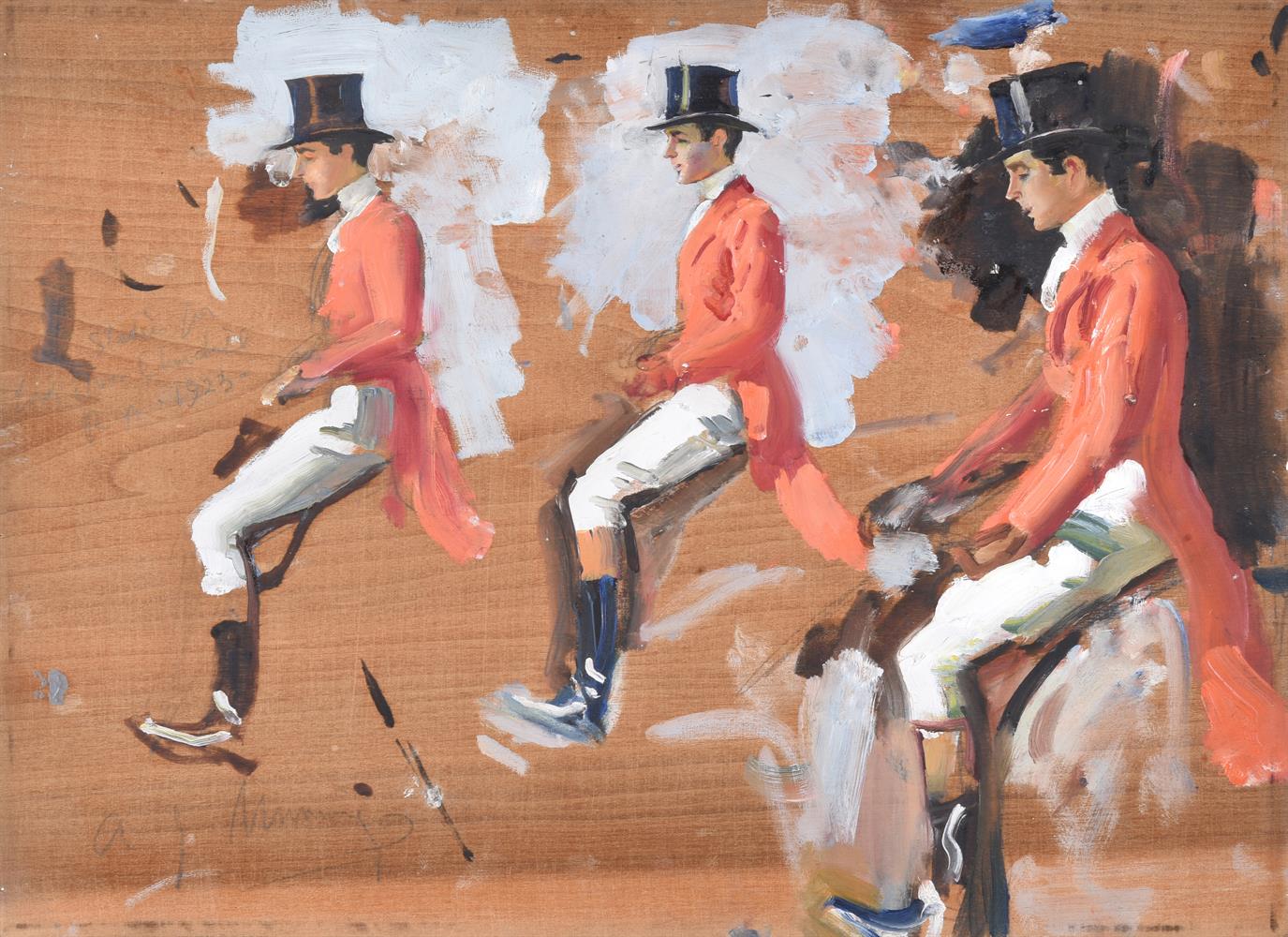
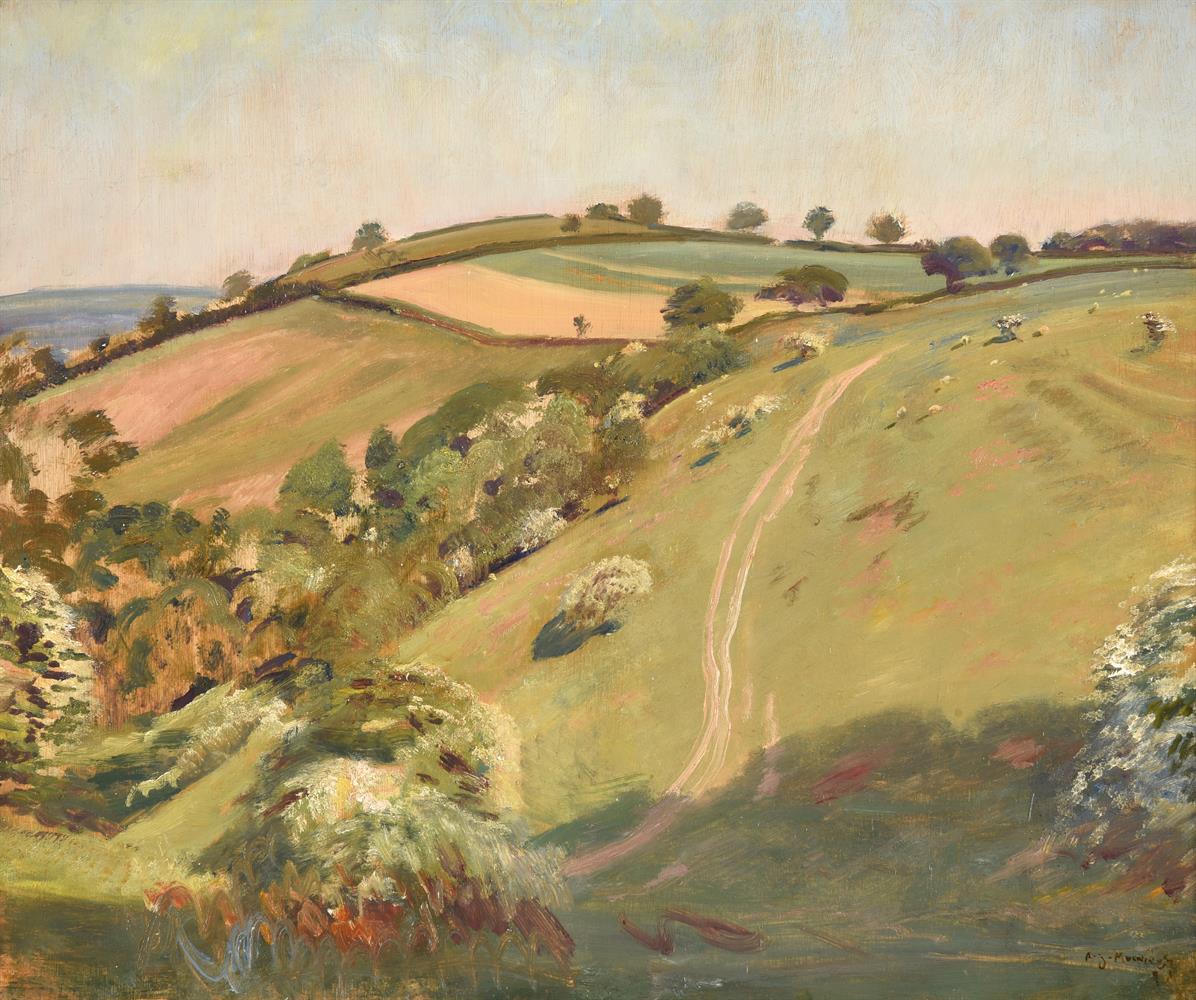







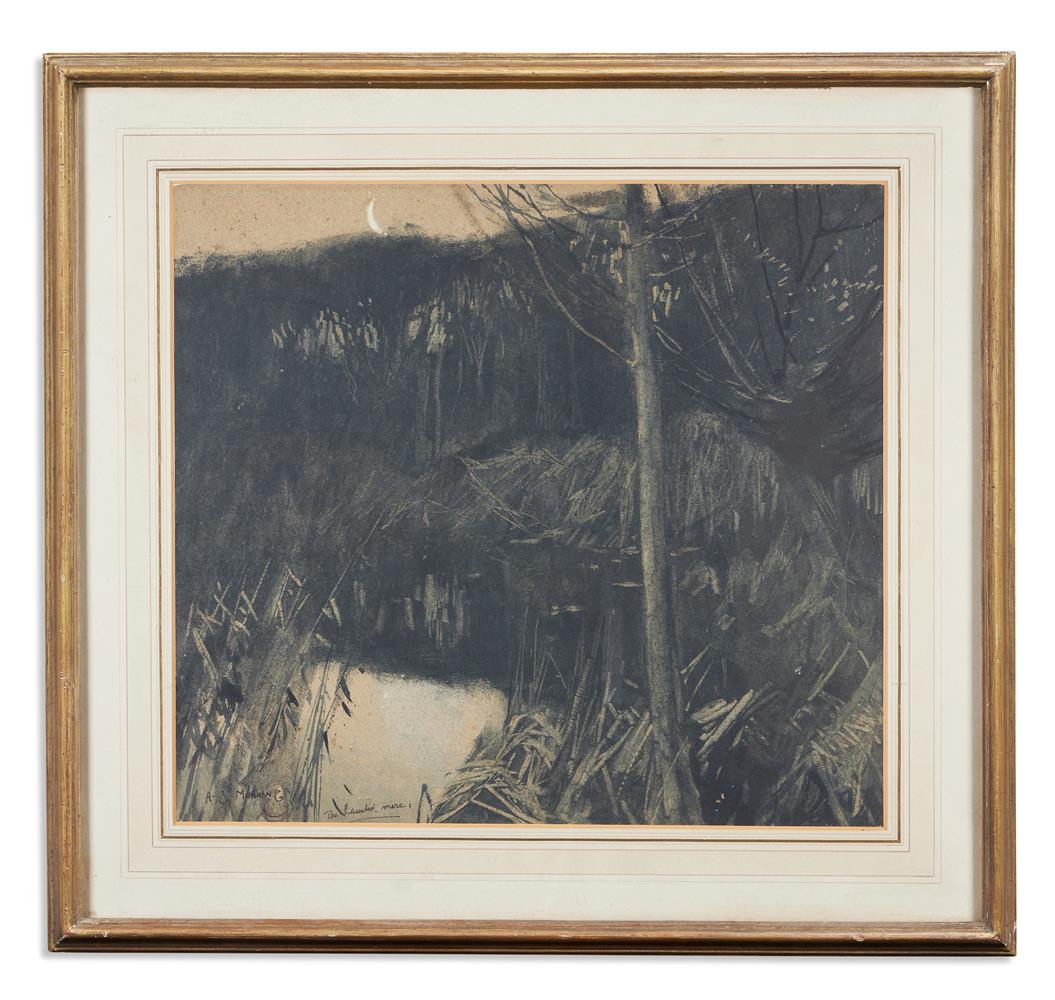

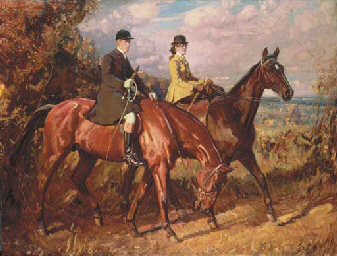

.jpg)
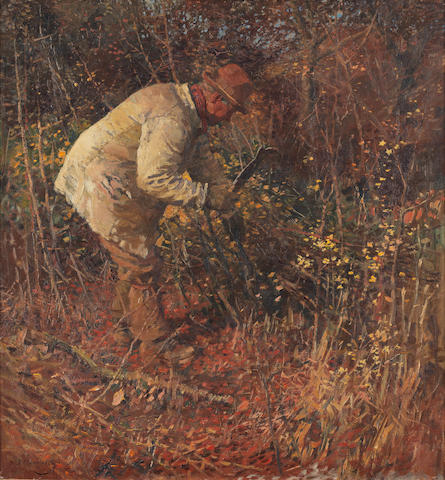
Testen Sie LotSearch und seine Premium-Features 7 Tage - ohne Kosten!
Lassen Sie sich automatisch über neue Objekte in kommenden Auktionen benachrichtigen.
Suchauftrag anlegen